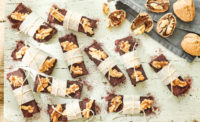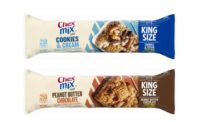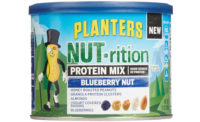Snack bars: What’s not to love about them? Concerned about convenience? They’re on-the-go. Worried about portion control? Most are single-serving size, which also knocks out the problem of resealing the package. From a purely functional standpoint, it’s easy to see why: According to one Mintel report, more than two-thirds of adults eat snack bars. Not only do they supply energy during physical activity, but they are quick snacks, meal replacements, supplements, and so much more. Because of their versatility, companies have a lot of flexibility when marketing their appeal to consumers.
Beyond their function, else can we use to appeal to consumers? Increasingly, snack bars are marketed as organic or non-GMO. According to a recent report from Packaged Facts, consumers are looking for more accountability from companies on their environmental accountability and their sustainability. Another key factor to consider when marketing snack bars is the high nutritional value these products have—their “better for you” proposition. Consumers’ rising awareness about health and fitness is also driving their food purchases. They are looking for nutrition and satiety.
Snack bars with grains can tackle both concerns. Grain foods are packed with fiber and protein—two buzzwords for consumers in the snack bar market. First, let’s talk about fiber. Fiber helps you feel fuller, so snack bars with high fiber content can tide you over to the next meal. They can also help consumers reach their daily intake of fiber, which 90 percent of Americans fall short of reaching. Next up: protein. According to Mintel, the amount of protein in a food is the attribute of highest interest for consumers. But of course, we have all had a terrible experience eating not-so-palatable, protein-packed nutrition bar. One of the main complaints from consumers about protein bars is their metallic taste—a side effect of keeping protein high, and sugar low. While it’s impossible to get protein levels up in the 25-grams range without some help, product developers bear reminding that grains are an excellent source of protein. In fact, according to a report by the Food and Agriculture Organization of the United Nations, more than 50 percent of the world gets most of its dietary protein from grains.
As we all know, flavor is king for consumers. Using grains could provide that boost of flavor to help make bars a little more palatable while providing the protein and fiber that consumers are after, not to mention all the other vitamins and nutrients they provide, like folic acid, thiamin, niacin, riboflavin and iron, just to name a few.
The market share of snack bars has been steadily growing, and it isn’t expected to stop. When it comes to making their final choice at the checkout register, consumers face multiple challenges. Nutrition, sustainability and convenience each fuel the decision-making process in one way or another. Grains-based snacks are a great way to provide consumers with the nutrition, energy and convenience they need.




